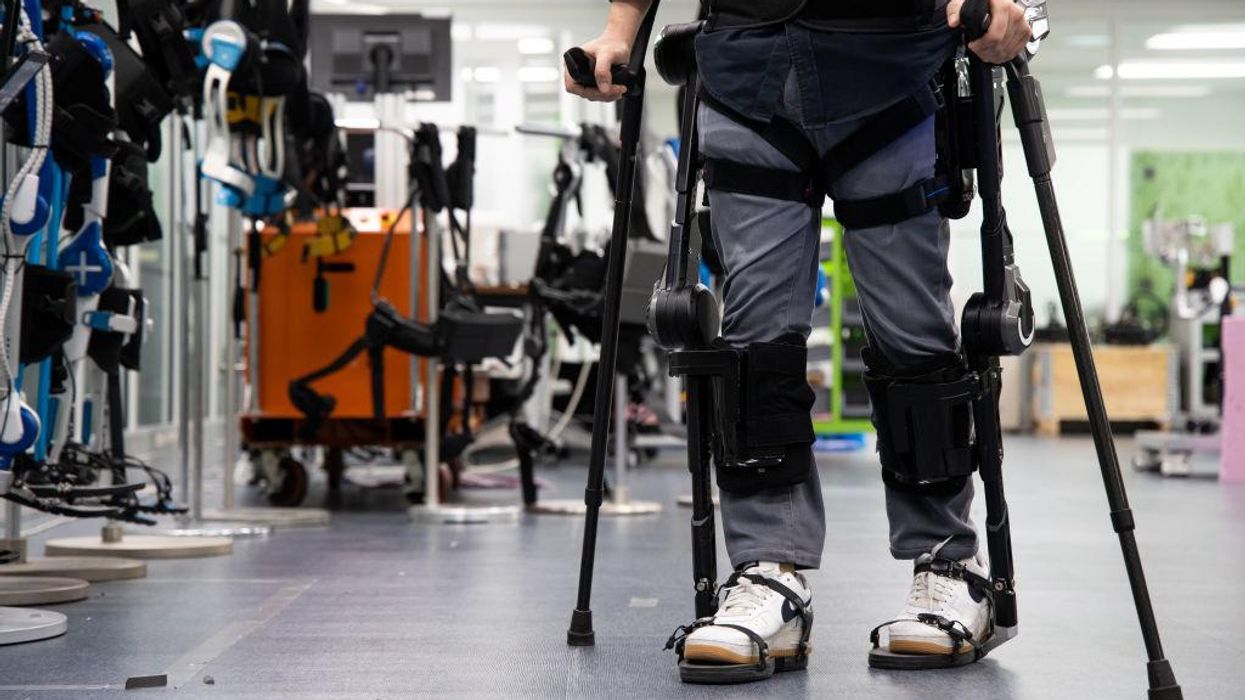
SeongJoon Cho/Bloomberg via Getty Images

U.S. Army combat veteran Richard Nieder's spinal cord was injured in 2013 during Operation Iraqi Freedom, leaving him depressed and in a wheelchair. In the ten years he was left unable to walk, he surmounted that depression by finding "something good in every day." Something good ultimately got him out of his wheelchair and standing tall.
Although the first recipient in Phoenix, Nieder is the latest of many veterans to have received a ReWalk Robotics exoskeleton via the U.S. Department of Veterans Affairs.
The technology enables paraplegics to stand, walk, and climb stairs, such that those who have served the United States and its people can regain a sense of autonomy they might otherwise have lost. The exoskeleton also boasts health benefits.
Studies conducted at the VA's Center for Medical Consequences of Spinal Cord Injury found that the use of this exoskeletal technology helped participants lose fat as well as helping with bowel function and the reduction of diabetes symptoms.
Nieder quipped to KPHO: "I can be a stand-up guy again, not just a role model."
The loss he suffered in 2013 wasn't just physical but also psychological. "It was the mental side of it. Once I figured that out, I was able to just start moving forward and realize I can do everything everybody else is doing. I just do it a little bit differently."
Despite surmounting the psychological challenge, Nieder was nevertheless keen to resume his previous abilities and to go on walks with his supportive wife.
The technology has already proved life-changing for the combat veteran. "After ten years of not walking, it's one of the most amazing feelings."
Dan Bonarti, Nieder's physical therapist at Touchstone Rehabilitation, indicated that those using the exoskeleton "can walk an hour or more at a time. I believe some have even done walking races with them."
Nieder said his rediscovered mobility is "more than freedom. It's complete independence, being able to be on my feet, to be eye to eye to everybody."
This battery-powered exoskeletal system has computer- and sensor-linked motors at the hips and knee joints. These are spurred into action by forward tilts of the wearer's upper body. Coordinated upper-body motions can prompt the system to trigger a sequence of synchronized, alternating steps resembling the natural function of the legs. KPHO reported further that a watch initiates the movements, from the seated position to upright.
The price of a ReWalk unit is steep, at approximately $77,000. However, in 2015, the VA announced that eligible veterans would be provided with the Israeli-designed ReWalk exoskeletons.
According to the VA, a user of the 51-pound ReWalk 6.0 should have a height between five-foot-three and six-foot-three and weigh no more than 220 pounds. There are other factors taken into consideration when approving applicants for an exoskeleton, such as bone density, muscle spasticity (relevant to coordination with the device), the ability to hold crutches, and the availability of a companion.